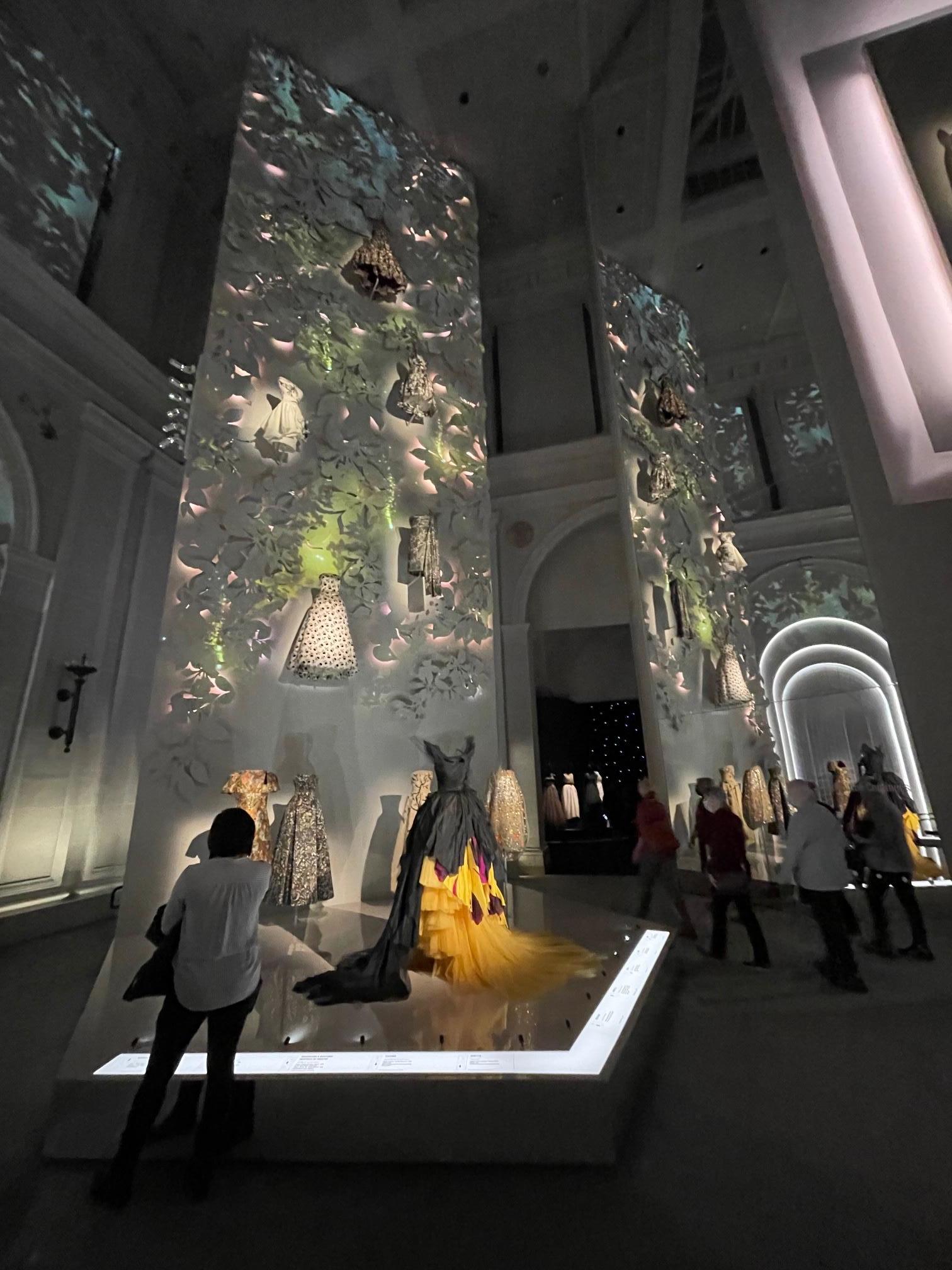
3 minute read
Musing on a Time Travel Hobby John H. Ostdick
American White Pelican (Breeding Plumage), Saylorville, Lake, Johnston, Iowa
Sandhill Cranes (Mating Dance), Platte River, Kearney, Nebraska Displayed at the Iowa State Fair, 2019
Advertisement


Christian Dior: Designer of DreamsExhibit Brooklyn Museum

Postcard: Musings on a Time Travel Hobby
Photographers and artists throughout history have interpreted these voiceless objects in various ways. Story & Photos by John H. Ostdick
My wife Michelle and I like to cast off occasionally and time travel. Sometimes we launch from a location down the road. Other adventures take us far and wide.
While dawdling in collectible shops with the central mission of joy and inspiration, we let go of time and pick about in other people’s sense of what is memorable or historic. In our younger years, this exploration might have been acquisitional in nature. As the things attached to our walls, lurked in our storage spaces, and/or cluttered the floors, that is seldom the goal for our travels today.
During one such journey to Miami’s Tropicana Flea Market in 2005, I ran across several intriguing faces to photograph. Their expressions, and particularly their eyes, seemed to speak to me in ways I didn’t quite understand. They were mannequin heads. A character I called Sweet Pea was my first capture. Over the years, she has acquired a lot of company. Full-body subjects seldom interest me. I’m looking for frozen emotion, time-stopped expressions that someone else created to evoke a response from people like me. Or not.
I realize I am not the first person to find the topic interesting. Photographers and artists throughout history have interpreted these voiceless objects in various ways. Perhaps you had the regrettable occasion to
witness the 1987 move,
“Mannequin,”(more on this later). I feel for you, as actor Andrew McCarthy probably does as well today. I am not pretending that I am creating high art, either. I shoot only with existing light, and never remove the subjects from their surroundings.
Strange images to collect? Perhaps. But I dare you not to be at least a little bit captivated. And sometimes how a shop owner presents, decorates, or displays a mannequin is almost as interesting as the face itself. Mannequin fascinations galore
Apparently, the subject attracts a following. Even a quick dive online provides more than anyone could ever digest about mannequins. There is a Facebook page on Vintage mannequins. Smithsonianmagazine has done a “history of” feature in the past and a page of mannequin images in its ongoing reader photo contest, available via the Smithsonian’s photo contest weblink with tag mannequin.
There are blogs on the subject. Etsy (a vintage 1960s French art deco advertising model mannequin head for $442.22) and eBay (a vintage Adel Roostein Syoko Yamaguchi full mannequin, $5,500) offer mannequins for sale. Pinterest offers pages to ponder.
The word mannequin apparently comes to us from the French (“an artist’s jointed model”) via the Flemish word manneken (“little man, figurine”) as a description of the Middle Ages practice of male pages modeling women’s clothes in Flanders. The first female mannequins (made of papier mâché) appeared in the mid-19th century in France. The figures evolved, first into wax creations and then, some time in the 1920s, into plaster.
Today, the images are forged from various materials, most commonly plastic and fiberglass, which although not as durable generally seem more realistic. All Things Mannequin
Here are a few mannequin nuggets, both head and full body, from my online dive:
Although the reference is clouded, Judy is the name most often used for a female dress form and James for a male version.
The average lifespan of a mannequin is seven years, either through wear and tear or going out of style.
Mannequin use is sensitive to market swings. When the economy is performing well, retailers splurge on wigs and makeup for realistic mannequins and the labor for maintaining them. When times are tougher, expect more headless and featureless mannequins.
A 2014 Herald & Reviewstory dates the oldest mannequin back to 1350 B.C. When archaeologists opened King Tutankhamun’s tomb in 1922, they found a wooden torso bearing the king’s likeness near a chest containing the young pharaoh’s wardrobe. It is considered the oldest-known forerunner to modern mannequins. The bust was likely used to model Tutankhamen’s elaborate garments and jewelry, providing a stationary figure matching the king’s specific











